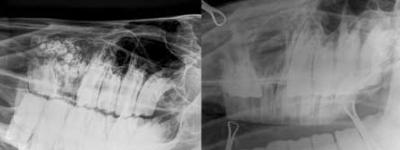Respiratory medicine
The R(D)SVS has for decades been recognised as one of the global leaders in the clinical investigation and research of equine respiratory diseases/disorders.

In particular, contributions to the veterinary scientific literature by current members of the medicine team have enhanced our knowledge of environmental airway diseases, including mild and severe equine asthma.
Respiratory disorders can present in a variety of ways ranging from poor athletic performance to severe coughing and labored breathing (dyspnea). The nature of the presenting signs will largely determine the service involved in the investigation of the case, with the soft tissue surgery service predominantly dealing with upper respiratory tract disorders and the medicine service dealing with lung disorders. Furthermore, as many cases of poor performance have involvement of more than one system, the investigation of such cases involves close liaison between the cardiology, orthopaedic, soft tissue surgery and respiratory medicine services.
Diagnostic techniques
The respiratory medicine service offers a full range of diagnostic techniques.
Videoendoscopy
Sophisticated videoendoscopic facilities permit visualisation of the airways down to the level of the large bronchi permitting the detection of abnormalities, including abnormal airway architecture and increased respiratory secretions. Furthermore, videoendoscopy facilitates the accurate collection of samples from the lower airways for subsequent analyses.
Radiography
The x-ray facilities available at the R(D)SVS permit radiographic examination of the chest of adult horses, a procedure which requires powerful equipment and skilled personnel. This technique allows assessment of the lung not accessible by endoscopic examination or airway sampling, such as the non-airway component of the lung.
Ultrasonography
Although ultrasound waves do not pass through the air-filled lung, abnormalities of the lung surface and pleural space and collapsed or fluid-filled lung can be readily detected by this diagnostic approach.
Arterial blood gas analysis
Measurement of oxygen and carbon dioxide within blood samples collected from the arteries offers a means by which the gas exchange function of the lung can be assessed. Depending on the underlying problem, this can result in a reduction in the arterial blood oxygen content with or without an increase in the carbon dioxide content, thus offering further information which may be useful in the diagnostic work-up of these cases.

